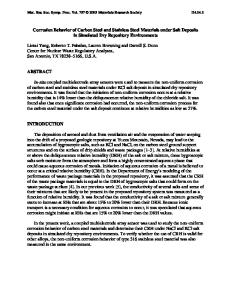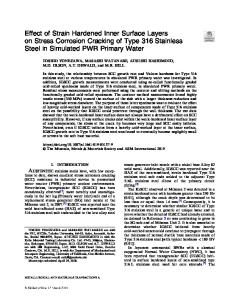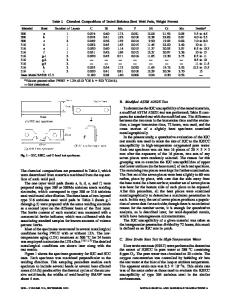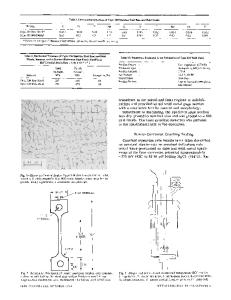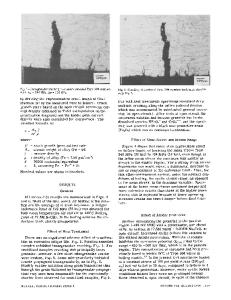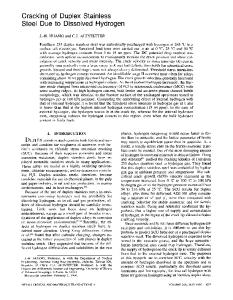Stress Corrosion Cracking of 2205 Duplex Stainless Steel with Simulated Welding Microstructures in Simulated Sea Environ
- PDF / 4,901,345 Bytes
- 14 Pages / 593.972 x 792 pts Page_size
- 39 Downloads / 350 Views
JMEPEG https://doi.org/10.1007/s11665-020-05052-w
Stress Corrosion Cracking of 2205 Duplex Stainless Steel with Simulated Welding Microstructures in Simulated Sea Environment at Different Depths Longfei Song, Zhiyong Liu, Jianpeng Hu, Xiaogang Li, Cuiwei Du, Yong Li, and Yue Pan (Submitted April 2, 2020; in revised form July 12, 2020) The stress corrosion cracking (SCC) of 2205 duplex stainless steels (DSSs) with different microstructures in simulated sea environments were studied by electrochemical measurements, electron backscattered diffraction and slow strain rate tensile tests. Heat treatments were used to obtain different microstructures. The DSSs were held at 1350 and 850 °C for 30 min and then quenched in the water. The results showed that the DSSs had a higher SCC susceptibility in simulated shallow sea environment than in the simulated deepsea environment. Electrochemical mechanism of the SCC process was controlled by environment factors (temperature, hydrostatic pressure and dissolved oxygen content). The mechanisms of SCC changed from anodic dissolution in the simulated shallow sea environment to hydrogen embrittlement in the simulated deep-sea environment. Moreover, the quenched DSSs, especially the steel held at 850 °C, were more vulnerable to SCC than as-received steel in the simulated sea environment due to the deterioration of the microstructure. Keywords
2205 DSS, microstructures, SCC, simulated sea environment
Abbreviations
DSS HP DO AD HE
Duplex stainless steel Hydrostatic pressure Dissolved oxygen Anodic dissolution Hydrogen embrittlement
1. Introduction 2205 duplex stainless steels (DSSs), with a 1:1 ferrite/ austenite volume ratio, have been widely used in marine environments due to their excellent mechanical properties and
Longfei Song, Jianpeng Hu, Yong Li, and Yue Pan, Key Laboratory for Corrosion and Protection (MOE), University of Science and Technology Beijing, Beijing 100083, China; Zhiyong Liu, Key Laboratory for Corrosion and Protection (MOE), University of Science and Technology Beijing, Beijing 100083, China; Shandong Key Laboratory of Corrosion Science, Institute of Oceanology, Chinese Academy of Sciences, Qingdao 266071 Shandong, China; and National Materials Corrosion and Protection Data Center, University of Science and Technology Beijing, Beijing 100083, China; Xiaogang Li and Cuiwei Du, Key Laboratory for Corrosion and Protection (MOE), University of Science and Technology Beijing, Beijing 100083, China; and National Materials Corrosion and Protection Data Center, University of Science and Technology Beijing, Beijing 100083, China. Contact e-mails: [email protected] and [email protected].
Journal of Materials Engineering and Performance
corrosion resistance (Ref 1, 2). Compared to that of austenitic stainless steels, DSSs have better resistance to localized corrosion in chloride-containing environment (Ref 3). The passive film is vital for corrosion resistance of DSS (Ref 4, 5). DSSs are being increasingly used as structural materials in marine industries. How
Data Loading...
